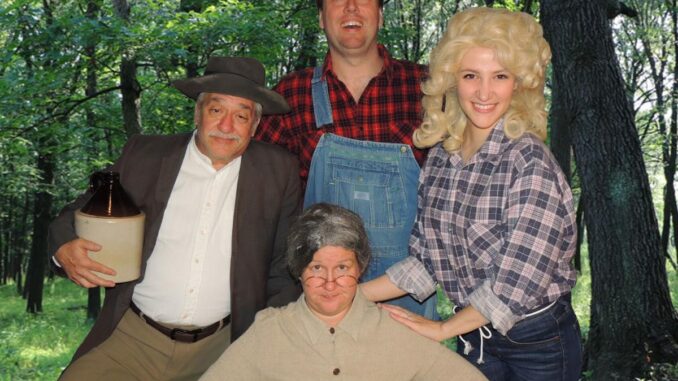
Beverly Hillbillies’ Buddy Ebsen Was ‘Very Happy’ Despite Early Career Struggles Daughter Says
On his 36-acre ranch in the Santa Monica Mountains, Buddy Ebsen spent time with his seven kids, riding horses, composing songs, and hammering home the importance of persistence. “He taught us to believe in ourselves, even if we fail,” recalls Buddy’s daughter Kiki Ebsen.
Best known as Jed Clampett, the down-home millionaire on The Beverly Hillbillies, Buddy hit a few speed bumps on the road to fame. Trained as a hoofer at his father’s dance school in Orlando, Buddy left college after his family lost everything in the Florida land boom collapse. Flat broke, he headed to New York to try his luck as a song-and-dance man. “He really struggled until he got enough work to send for his sister, Vilma. That was a big accomplishment for him to reunite the family,” explains Kiki. Soon Buddy and Vilma were whirling across the stage in the Ziegfeld Follies and appearing in MGM films. “He loved any role where he could dance,” Kiki says. “Dancing was his lifeblood.”
A rising star, Buddy was originally cast as the Tin Man in The Wizard of Oz. He was replaced because the aluminum dust in the body paint made him deathly ill. “The studio spun the story that he’d had an allergic reaction. It wasn’t an allergy, it was toxic,” Kiki revealed. Buddy quit MGM and landed some TV gigs before striking oil as Jed Clampett in 1962 at age 54. Later, he had another hit with Barnaby Jones, portraying an aging PI on the hunt for his son’s killer. Money rolled in, but Buddy didn’t let it go to his head. “It wasn’t a lavish lifestyle that we grew up in,” Kiki says. “He believes if you want something badly enough, you have to work hard to get it.”
Matters of the heart were no exception. At 77, Buddy — a two-time divorcé — found love again with his third wife, Dorothy. “He was very happy toward the end of his life with Dorothy. They traveled and enjoyed the wisdom of many decades gone by,” Kiki tells Closer.
In her new cabaret-style jazz show called My Buddy, Kiki celebrates her father’s life and admits that they didn’t always see eye-to-eye. Buddy wanted her to sing jazz vocals, but she joined a rock band instead. At last, she’s honoring his wish and paying homage to the dad who helped her bottle-feed baby mice and pointed at the stars when she was anxious about a piano recital. “He said, ‘We’re just a speck on a speck in.

the sky. Don’t worry. It’s OK.’ He had a great way of putting things in perspective, knowing that life’s not an easy journey,” she said. “I miss that.”
Italy’s one-euro-home sales have been attracting a lot of interest over the past few years, with dozens of opting to snap up abandoned properties in some of the country’s depopulated towns.
But while towns like Mussomeli in Sicily and Zungoli in Campania have managed to offload various abandoned dwellings to foreigners longing to live the Italian dream, some have struggled to sell their empty homes.
Among them is Patrica, a remote medieval village of barely 3,000 residents located south of Rome, where more than 40 properties deserted in the early 1900s have been left to rot.
Perched on a rocky plateau overlooking the Sacco valley in central Italy, Patrica is an idyllic spot, but life here wasn’t easy for locals in the past.
Many left in search of a brighter future elsewhere, leaving their homes empty for decades.
In an attempt to breathe new life into the dying village, the town’s mayor Lucio Fiordaliso has been trying to emulate the success of other Italian villages who’ve put their empty homes up for sale for one euro, or just over a dollar. He’s so far had little success.
“We first mapped all abandoned houses and made an official call out to the original owners to invite them to hand over their dilapidated family properties, but we managed to sell just two homes for one euro,” Fiordaliso told CNN.
While local authorities in towns left underpopulated due to earthquakes and other natural calamities have the jurisdiction to put abandoned homes up for sale without permission from the owners, this isn’t the case for Patrica and other towns like it.
“We first need the availability of owners, or their heirs, in disposing of their old houses,” says Fiordaliso.
“Only then can we place these properties up for sale with their consent, which makes the process very complicated. Almost impossible.”
Fiordaliso explains that the town received a “positive response” from 10 owners after sending out a “public call to involve them in our one-euro-homes project,” but they withdrew at the last minute. The rest never replied.
